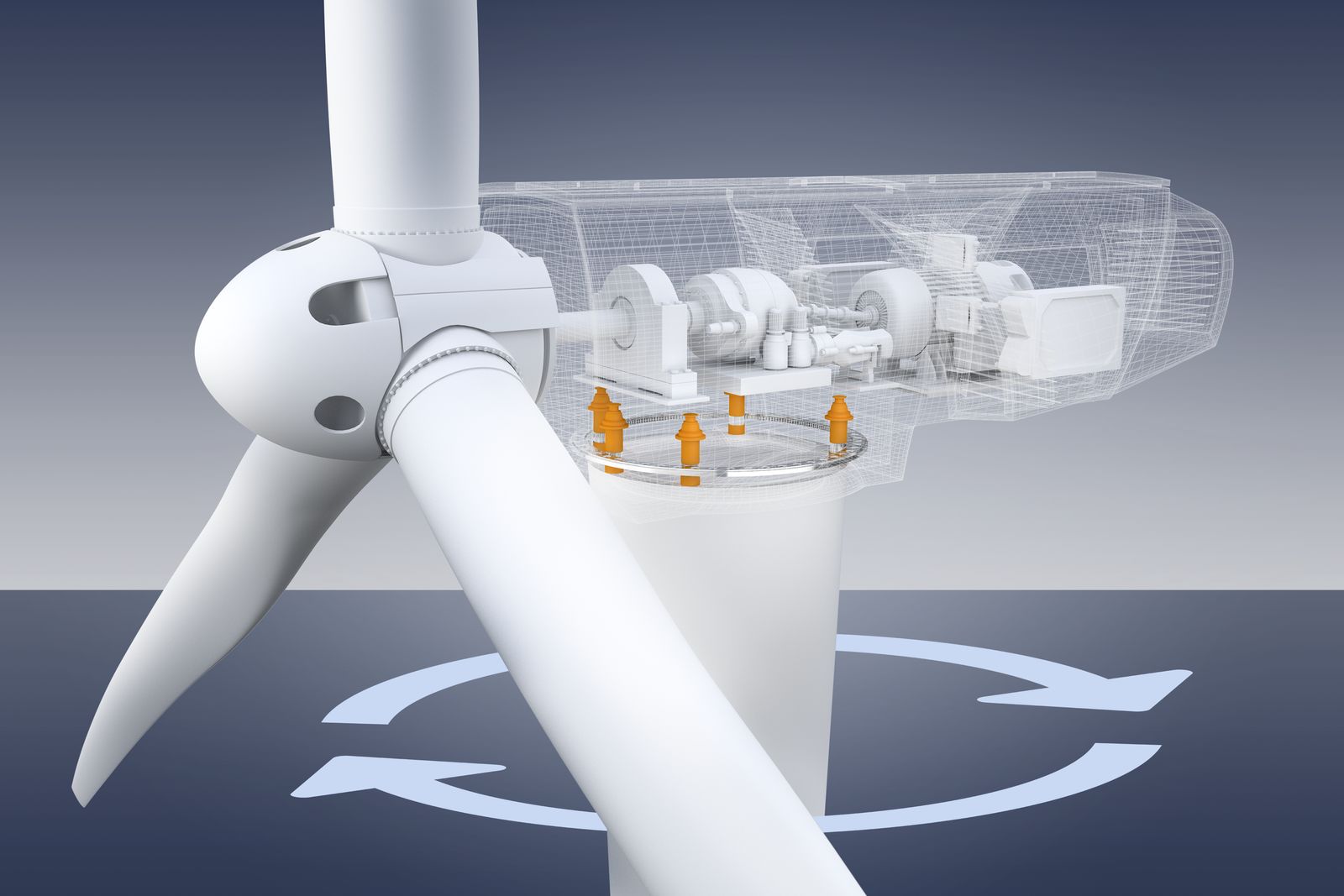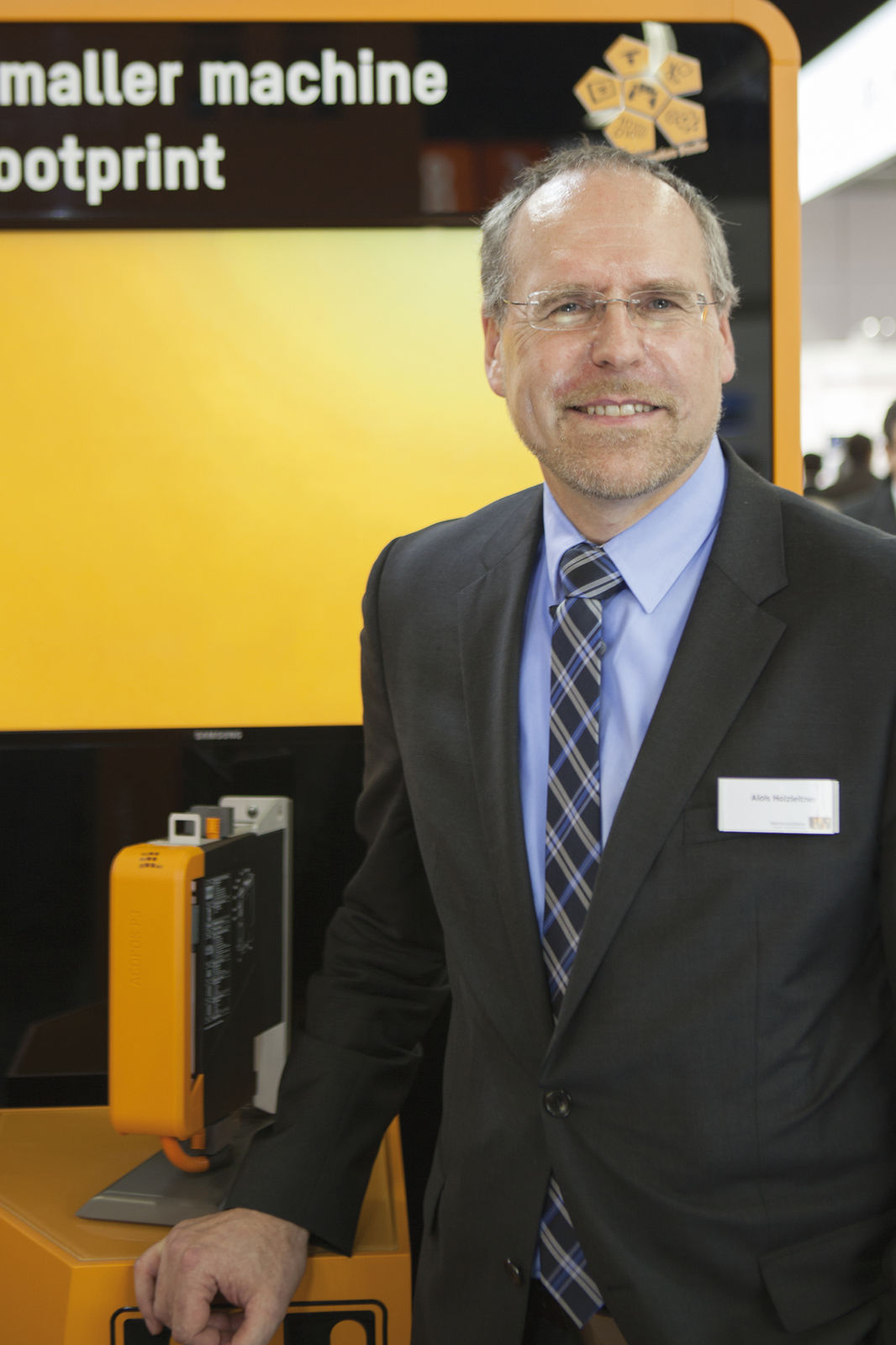Yaw systems that allow wind turbines to track wind direction subject them to unnecessary mechanical stress and accelerated wear. B&R's Peter Kronberger and Alois Holzleitner are convinced that a more sustainable approach is possible.

Yaw systems rotate turbines into the wind in order to maximize energy yield. Peter, you've called conventional approaches outdated. What do you mean by that?
Peter Kronberger: The head, or nacelle, of a wind turbine is typically rotated by four to eight motors. This is known as a yaw system, and the process is called azimuth control. The motors are typically controlled by a soft starter or a frequency inverter. With the head of an offshore wind turbine often weighing over 500 tons, the yaw system is subjected to substantial mechanical wear, which inevitably leads to downtime and costly service. Additional mechanical stress comes from the hydraulic brake that holds the nacelle. This brake is only partially disengaged during yaw adjustment to prevent uncontrolled movements in crosswinds.
What alternatives would you suggest?
Kronberger: Intelligent servo drives offer substantial potential for optimizing azimuth control. Advanced torque control, for instance, can reduce the levels of torque experienced by mechanical components. Then you have backlash compensation, which prevents the impacts that otherwise occur between gear teeth when the turbine changes direction. When you have the problem of wear under control, you're able to re-adjust the nacelle more often. That means a boost in both availability and yield.

Peter Kronberger, Global Technology Manager - Energy, B&R
"Intelligent servo drives offer substantial potential for optimizing azimuth control."
Are there servo drives that can handle the harsh offshore conditions?
Alois Holzleitner: Absolutely. Our new ACOPOS P3 servo drive is exceptionally rugged. Variants are available to control from one to three axes, and they are all designed to handle the environmental conditions found in a wind turbine. They've been tested for continuous vibrations up to 1 g, and the circuit boards are fully coated to ensure flawless operation even in humid, salty air. Servo drives have some other very important advantages, though.
Such as?
Holzleitner: Our servo drives provide helpful feedback about the system, which can be used not only for azimuth control, but also for remote diagnostics. Temperature and current values as well as error logs are stored automatically and can be read remotely. Among other benefits, this allows for optimized maintenance. And let's not forget the aspect of safety. The P3 variant featuring B&R's safety technology provides safe torque and position values up to PL e. If you utilize this information, you no longer need the cable twist sensor that is used in a conventional system.

Alois Holzleitner, Technical Manager - Motion, B&R
"Using our ACOPOS P3 servo drive helps increase yield, reduce wear and improve availability."
How complicated is the process of converting to a servo solution?
Kronberger: It's much easier than you might expect. All the components are off-the-shelf products, and the ACOPOS P3 can be used with any servo motor. Essentially, all you need to do is replace the soft starter or frequency inverter with a servo drive for the required number of axes. With relatively little effort, you get a big payoff in terms of yield and availability.
The robust construction of B&R's ACOPOS P3 servo drive makes it ideally suited for offshore applications. The P3 also provides feedback about the system that can be used for remote diagnostics and predictive maintenance.
